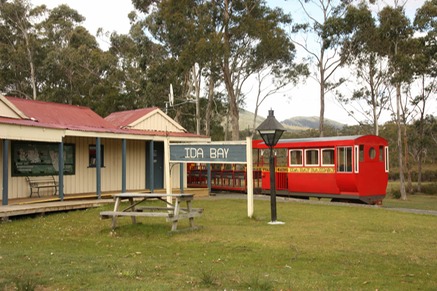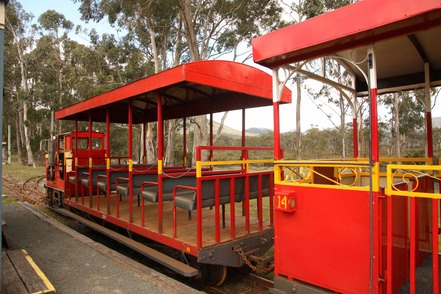
Having paused in Southport to take in the views, we headed back to the highway, heading on to Lune River, the source of the limestone that was carried down to the sea and the ships that would carry it north to Electrona on the Ida Bay railway. There’s a turn off onto a dirt road that’ll take the inquisitive traveller to thermal springs and Newdegate Cave, named after Sir Francis Newdegate, the Governor of Tasmania when it was discovered by timber workers in 1917. It’s the largest tourist cave in Australia which occurs in dolomite, rather than limestone, and was one of the area’s early tourist attractions.
That’s not to suggest an absence of limestone in the area, however. It’s definitely there, and a few kilometres after Lune River at Ida Bay there’s the historic Ida Bay Railway, a narrow (twenty-four inch/sixty centimetre) gauge line constructed in 1922. Heritage listed, it’s the last original bush tramway still operating in Tasmania. There were a number of similar lines carrying minerals and timber down to the wharves and jetties, and the seven-kilometre line also happens to be the most southerly railway in Australia.

We hadn’t planned on taking a ride on the train, but it was around a quarter past eleven when we pulled in to check things out and since the train was about to head off (departures at two hour intervals from 9.30am to 3.30pm seven days a week in summer) the round trip seemed like a good idea.
The return trip takes around two hours, as the train meanders through the bush and along the water’s edge to Deep Hole Bay, an attractive destination that’s only accessible on foot, boat or train.
There’s a picnic shelter with barbeque facilities and toilets at the beach, and if you’re after a barbecued lunch they’ll carry the gas bottle down on the train. You could also take a hike along the walking tracks to Southport Lagoon or Southport Bluff and the King George III monument and return on a later train, though we elected to go straight there and back.